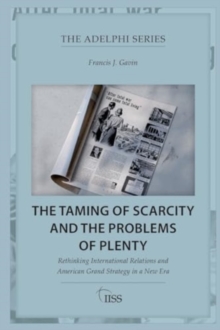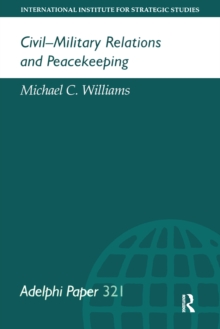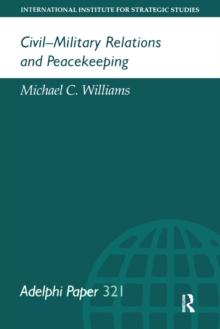
The Economic Functions of Violence in Civil Wars Paperback / softback
by David Keen
Part of the Adelphi series series
Paperback / softback
Description
The persistence and brutality of contemporary civil wars have left many analysts puzzled.
Traditional interpretations describe civil wars as simple confrontations between two sides, as explosions of mindless violence, or as disrupting apparently benevolent development processes within countries.
These approaches do not fully take into account the rational economic calculations that drive many civil conflicts in the late twentieth century.
This paper argues that, to understand violence in civil wars, we need to understand the economic dimensions underpinning it.
Economic activities arising from war fall into seven categories: pillage; extorting protection money; controlling or monopolising trade; exploiting labour; gaining access to land, water and mineral resources; stealing aid supplies; and advantages for the military.
If these short-term benefits suggest that there is more to civil wars than simply winning, so too does the prevalence and persistence of behaviour that is, in military terms, counter-productive.
This can take two forms: cooperating with the 'enemy'; and mounting attacks that increase, rather than reduce, political and military opposition. This paper describes two forms of economic violence: 'top-down', which is incited by political leaders and entrepreneurs; and 'bottom-up', where violence is actively embraced by 'ordinary' people, either civilians or low-ranking soldiers.
Seven conditions can encourage top-down economic violence: a weak state; rebel movements that lack strong external finance or support; an undemocratic or 'exclusive' regime under threat; economic crisis; ethnic divisions that cut across class lines; the existence of valuable commodities; and prolonged conflict.
Three conditions are particularly conducive to bottom-up violence: deep social and economic exclusion; the absence of a strong revolutionary organisation; and impunity for violent acts.
To achieve more lasting solutions to civil conflicts, it needs to be acknowledged that violence can present economic opportunities.
This paper concludes that outside intervention must take into account the political and economic interests of the violent.
Intervention must provide realistic economic alternatives to violence, and must handle democratic transitions and the introduction of free markets with sensitivity. This is likely to mean strengthening and improving the institutions of the state, such as schools, social-security systems and establishing a more accountable police force and Army.
Information
-
Item not Available
- Format:Paperback / softback
- Pages:120 pages
- Publisher:Thomson West
- Publication Date:14/02/2005
- Category:
- ISBN:9780199223732
Information
-
Item not Available
- Format:Paperback / softback
- Pages:120 pages
- Publisher:Thomson West
- Publication Date:14/02/2005
- Category:
- ISBN:9780199223732










